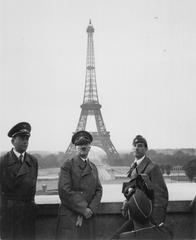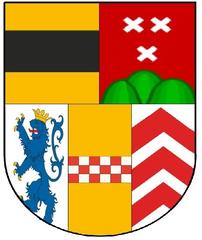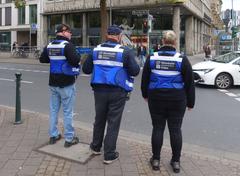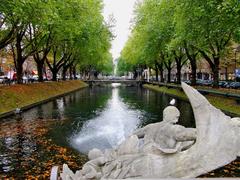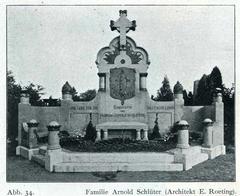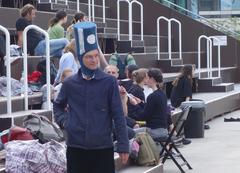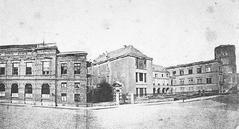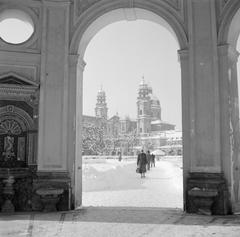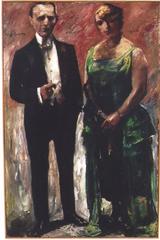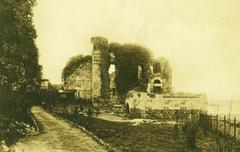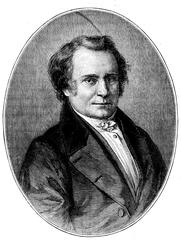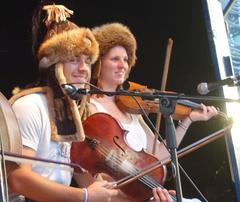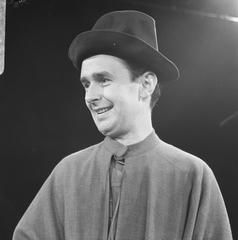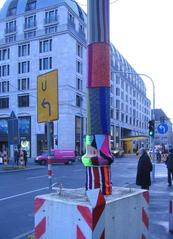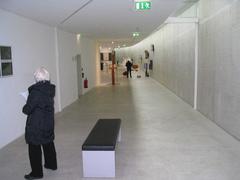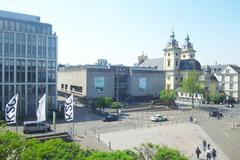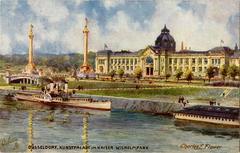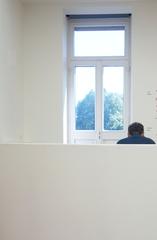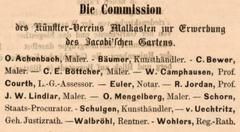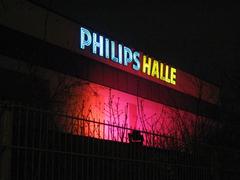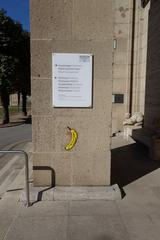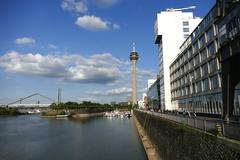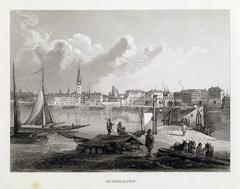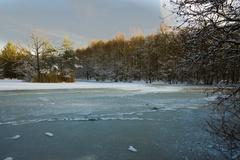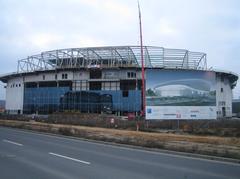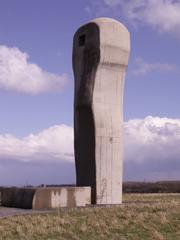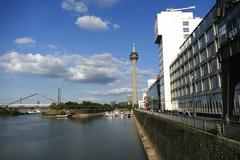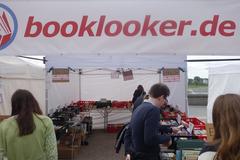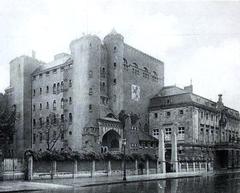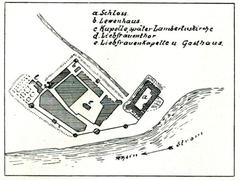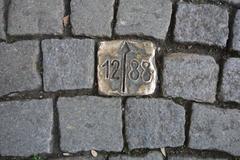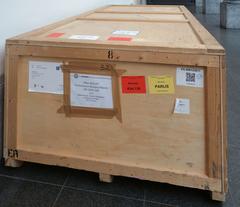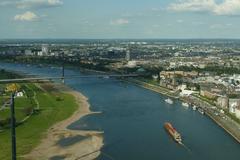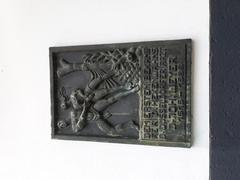
Rheinknie Bridge Visiting Hours, Tickets, and Düsseldorf Historical Sites Guide
Date: 04/07/2025
Introduction to Rheinknie Bridge
The Rheinknie Bridge (Rheinkniebrücke) stands as one of Düsseldorf’s most iconic landmarks, blending engineering prowess, modernist design, and cultural vibrancy. Spanning the Rhine at the distinctive “Rheinknie” (Rhine Knee), the bridge connects the left-bank district of Oberkassel with the historic heart and government quarter of the city. Since opening in 1969, its slender cable-stayed silhouette has defined Düsseldorf’s southern skyline, serving as both a vital transportation artery and a favored spot for panoramic views, photography, and city events. This in-depth guide provides essential information on visiting hours, ticketing (none required), accessibility, nearby attractions, and travel tips to help you experience this celebrated Düsseldorf site (auslanderblog.com; de.wikipedia.org; evendo.com; Visit Düsseldorf).
Contents
- Historical Background
- Post-war Urban Renewal
- Planning and Construction
- Urban and Cultural Role
- Engineering and Design
- Structural Features
- Transportation and Connectivity
- Visitor Information
- Visiting Hours & Tickets
- Access and Getting There
- Safety, Accessibility & Tips
- Nearby Attractions
- Events and Photography
- Frequently Asked Questions (FAQ)
- Conclusion
- Sources
Historical Background
Post-war Urban Renewal
Following World War II, Düsseldorf emerged as the capital of North Rhine-Westphalia, prompting significant investment in infrastructure and modernization (auslanderblog.com). The need for new Rhine crossings became apparent as the city grew, leading to the vision for the Rheinknie Bridge as a symbol of renewal and progress.
Planning and Construction
Located at a sharp bend in the Rhine, the bridge’s site was chosen to connect the expanding Oberkassel district with the city center and burgeoning government quarter. Construction began in the late 1960s and the bridge officially opened in October 1969. Its completion not only enhanced city connectivity but also showcased Germany’s engineering advancements (de.wikipedia.org).
Urban and Cultural Role
The Rheinknie Bridge is among seven major Rhine crossings in Düsseldorf. It is centrally positioned near landmarks like the Landtag (State Parliament), Rheinturm (Rhine Tower), and MedienHafen. The bridge is also a focal point during major events, such as the annual Rheinkirmes funfair, and offers stunning city views (de.wikipedia.org).
Engineering and Design
Structural Features
The Rheinknie Bridge is a cable-stayed structure celebrated for its minimalist, modernist design. A single central pylon supports the main span through radiating cables, minimizing piers in the river and reducing environmental impact.
- Total Length: 1,319 meters
- Main Span: 319 meters
- Width: Six vehicle lanes, plus two wide pedestrian and cycling paths
Construction utilized reinforced concrete and steel, exemplifying post-war engineering innovation (evendo.com).
Transportation and Connectivity
As a key part of Düsseldorf’s mobility network, the bridge carries the A52 (formerly A479) expressway, linking left- and right-bank districts. Dedicated pedestrian and cycling paths are integrated into the larger Rhine Cycle Route.
Public transport is well-connected: tram lines 706, 708, and 709, and bus routes 732, 834, 835, and M3, stop near the bridge at “D-Poststraße” and “D-Landtag/Kniebrücke” (evendo.com).
Visitor Information
Visiting Hours & Tickets
- Hours: Open 24/7; no restrictions for pedestrians, cyclists, or vehicles.
- Tickets: No entrance fees or tickets required for access.
Access and Getting There
- Public Transport: Trams 706, 708, 709; buses 732, 834, 835, M3. Tickets can be bought at vending machines or via the Rheinbahn app.
- Taxi/Ride-Share: 10–15 minutes from Hauptbahnhof; fares typically €11–€20.
- Walking: 20–30 minutes from Altstadt via the scenic Rhine Promenade.
- Cycling: The bridge is part of the Rhine Cycle Route and connects to multiple city bike paths.
- Parking: Limited on-site parking; nearby garages such as Q-Park (Neusser Straße 14) and CONTIPARK (Rheinufertunnel) offer paid options (Mobian).
Safety, Accessibility & Tips
- Accessibility: Step-free ramps and wide, level paths accommodate wheelchairs and strollers.
- Lighting: The bridge is well-lit at night.
- Etiquette: Remain on designated paths; cycling and walking lanes are clearly marked.
- Best Times: Sunrise and sunset offer the most dramatic views; the bridge is especially lively during festivals (Visit Düsseldorf).
Nearby Attractions
- Rheinturm (Rhine Tower): Observation deck and revolving restaurant with panoramic views.
- Altstadt (Old Town): Historic pubs, breweries, and cultural sites.
- MedienHafen: Modern architecture and trendy dining.
- Rhine Promenade: Scenic walking and cycling route along the river.
- Landtag Nordrhein-Westfalen: State parliament building, sometimes open for tours.
- Kunst im Tunnel (KIT): Underground contemporary art gallery.
- Königsallee: Düsseldorf’s famous luxury shopping boulevard.
For more, see Time Out Düsseldorf and holidify.com.
Events and Photography
- Major Events: Rheinkirmes funfair (July), Carnival, Japan Day fireworks.
- Photography: Best at sunrise, sunset, and during nighttime illumination. The bridge’s design and the river skyline make for iconic city images (baukunst-nrw; Locationscout).
Frequently Asked Questions (FAQ)
Q: What are the Rheinknie Bridge visiting hours?
A: Open 24/7 for all visitors.
Q: Is there a ticket fee?
A: No, access is free.
Q: Is the bridge accessible for wheelchairs and strollers?
A: Yes, there are ramps and wide paths.
Q: Can I take public transport to the bridge?
A: Yes, multiple tram and bus lines stop nearby.
Q: Are there guided tours?
A: The bridge is included in several city walking and cycling tours, though not all are exclusively about the bridge.
Q: Are there toilets or facilities on the bridge?
A: No; facilities are available in nearby districts.
Conclusion
The Rheinknie Bridge is a living testament to Düsseldorf’s resilience, ambition, and urban spirit. With 24/7 free access, seamless connections to transit and cycling networks, and proximity to top city attractions, it offers a unique vantage point for understanding both the city’s history and its modern identity. Whether your interests are architecture, photography, cultural events, or simply a scenic stroll, the bridge promises a rewarding visit. For up-to-date event info, guided tours, and travel tips, explore official resources or download the Audiala app.
Sources and Further Reading
- Rheinknie Bridge Visiting Hours, Tickets, and Guide to Düsseldorf’s Iconic Historical Site, 2025, Auslander Blog (https://auslanderblog.com/architecture-guide-dusseldorf/)
- Rheinkniebrücke, Wikipedia, 2025 (https://de.wikipedia.org/wiki/Rheinkniebr%C3%BCcke)
- Rheinknie Bridge Düsseldorf: Visiting Hours, Tickets & Urban Highlights, 2025, Evendo (https://evendo.com/locations/germany/cologne/landmark/rheinkniebrucke)
- Rheinknie Bridge Düsseldorf: Visiting Hours, Tickets, and Travel Tips, 2025, Germany Travel Blog (https://germanytravel.blog/cities/dusseldorf/)
- Rheinknie Bridge Düsseldorf: Visiting Hours, Tickets, and Nearby Attractions, 2025, Baukunst NRW (https://www.baukunst-nrw.de/en/projects/Rheinkniebruecke—318.htm)
- Visit Düsseldorf Official Website, 2025 (https://www.visitduesseldorf.de/en)


